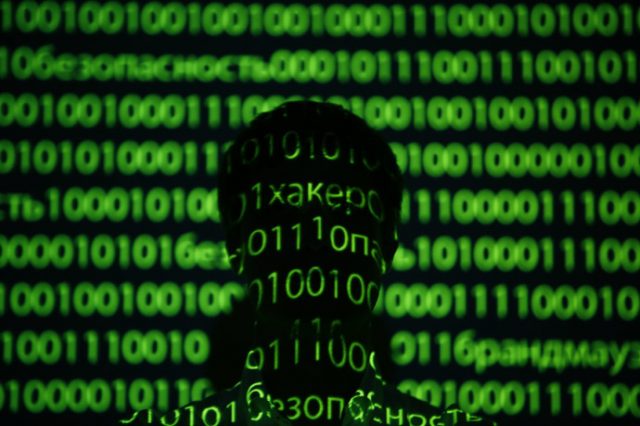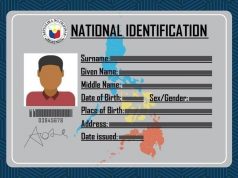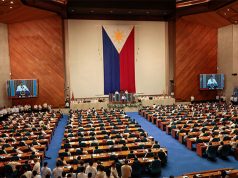MANILA, Philippines — Passed on second reading and with a ready appropriation of P2 billion in the proposed 2018 national budget, the National Identification System is practically upon us.
On Wednesday, the House of Representatives finished critical debates on the bill and passed it on second reading. Its approval on third and final reading, really a formality, is expected soon.
The Senate counterpart of the bill is being pushed as well since the measure has been identified as a priority by both chambers.
House Bill No. 6221, or the Filipino Identification System (FilSys), aims to establish a single, unified and streamlined national ID system and requires all Filipinos 18 years old and older, residing in the Philippines or abroad, to register with the Local Civil Registry Office (LCRO) of the city or municipality where they live or with any of the implementing agencies and apply for the ID.
Applying for the FilID is free.
Proponents of the measure say it will simply the delivery of public services, reduce delays and redundancy in transactions, bring down administrative costs and expenses since it would eliminate the need to have multiple government IDs.
But lawmakers opposed to the bill, led by the Makabayan bloc, worry about the security of the personal data required to be included in the FilID.
“Kaya natin kinukwestyon at tinututulan dahil ang ID ay nakakabit sa database, tapos sa database na iyon, hindi lang simpleng identification ang hinihingi sa’yo kundi bukod sa biometric (data) kasama ang iyong (The reason we question and oppose is because the ID is linked to the database and that database does not only require simple identification but, aside from biometric data, also your) genetic records, DNA, educational records, medical, religious, ideological and philosophical beliefs,” ACT party-list Representative Antonio Tinio said.
“Para makuha ang mga ito sa private institutions, kailangan ng court order. Ngunit sa batas na ito ay essentially binibigyan ng kapangyarihan ang gobyerno na kunin at panghawakan ang mga ito (To get this information from private institutions requires a court order. But this law essentially gives the government the power to acquire and store it),” he added.
The measure, Tinio added, would do away with the right to privacy.
“Nanawagan tayo sa publiko na maging aware. Hindi ito usapin ng convenience, huwag itong ipagpalit para doon sa basic right of privacy ng taumbayan (We urge the public to be aware. This is not simply an issue of convenience, do not trade this for the people’s basic right to privacy),” Tinio stressed.
Laguna Representative Sol Aragones, one of the principal authors of the bill, said the Philippine Statistics Authority, Department of Information and Communications Technology and the National Privacy Commission will be in charge of “organizational, physical, and technical security measures” of the system.
“Magkakaroon po ng system para sa (There will be a system for) protection against natural dangers gaya ng (like) accidental loss or destruction at (and) human dangers gaya ng (like) unlawful access, fraudulent misuse, alteration and contamination ng data,” she said.
She said all implementing agencies must comply with RA 10173, or the Data Privacy Act, to ensure the protection of the information gathered and of the right to privacy, stressing all information stored in the FilSys will not be given to third parties — including law enforcement and national security agencies, and the military — except under certain circumstances enumerated in the proposed law.
Aragones cited the following exceptions when the information in the FiID may be disclosed:
(a) when the holder of the FilID expressly authorizes the disclosure of such information to a third person, entity or agency
(b) in case of accident, disaster or fortuitous events, when information on the medical history of the holder such as the blood type or special medical needs or other relevant information are needed by medical institutions and health service workers
(c) when the interest of public health or safety so requires
(d) upon the order of any competent court
The FilID will contain the following:
(a) On the face of the card:
(1) Common Reference Number (CRN)
(2) Full name
(3) Name suffix
(4) A front facing photograph
(5) Sex
(6) Date of birth
(7) Place of birth
(8) Permanent address
(9) Blood type
(10) Barcode
(b) In the smart chip:
(1) Common Reference Number
(2) Agency code
(3) Enrolment date (YYYY/MM/DD)
(4) Station ID
(5) Sequence number (enrolment per station)
(6) Full name
(7) Name suffix
(8) Sex
(9) Date of birth
(10) Place of birth
(11) Permanent address
(12) Marital status
(13) Blood type
(14) Parents’ full name
(15) Biometrics information:
- Left primary finger code
- Right primary finger code
- Left backup finger code
- Right backup finger code
- Iris scan
- Facial image exception code
(16) Height (in centimeters)
(17) Weight (in kilograms)
(18) Distinguishing features
(19) Tax Identification Number
(c) In the database:
(1) Common Reference Number
(2) Agency code
(3) Enrolment date (YYYY/MM/DD)
(4) Station ID
(5) Sequence number (enrolment per station)
(6) Full name
(7) Name suffix
(8) Date of birth
(9) Place of birth
(10) Sex
(11) Permanent address
(12) Temporary mailing address
(13) Email address
(14) Mobile number
(15) Marital status
(16) Spouse CRN
(17) Marriage Certificate Reference number
(18) Father’s full name
(19) Father’s name – suffix
(20) Father’s CRN
(21) Father’s birth certificate reference number
(22) Mother’s full name
(23) Mother’s name – suffix
(24) Mother’s CRN
(25) Mother’s birth certificate reference number
(26) Parent’s Marriage Certificate reference number
(27) Biometrics information, as follows:
- Left primary finger code
- Right primary finger code
- Left backup finger code
- Right backup finger code
- Facial image exception code
(28) Height (in centimeters)
(29) Weight (in kilograms)
(30) Distinguishing features
(31) Relevant information to prove filiation, paternity, maternity and legitimacy or illegitimacy of a child
(32) Special status, if any (senior citizen or elderly, PWD, or solo parent)
(33) Other personal circumstances, such as:
- Voter’s identification number
- Philippine Passport number
- Tax Identification Number (TIN) and tax related concerns
- Philippine Health Insurance Corporation (PhilHealth) membership number
- Professional Regulation Commission (PRC) registration number
- Government Service Insurance System (GSIS) number
- Social Security System (SSS) number
- Home Development Mutual Fund (HDMF/PAG-IBIG) membership number, or
- Driver’s license
(34) Such other information as the pertinent authorities may require for the purpose of attaining the objectives of the FilSy
(35) Death Certificate Reference Number (DCRN)
The government agencies that will implement the FilSys are:
(a) DICT;
(b) DFA;
(c) Department of Interior and Local Government (DILG);
(d) DOLE;
(e) PSA;
(f) GSIS;
(g) SSS;
(h) Commission on Election (COMELEC);
(i) NPC;
(j) Philippine Regulations Commission (PRC);
(k) PhilHealth;
(l) HDMF or PAGIBIG Fund;
(m) Bureau of Internal Revenue (BIR);
(n) Local Civil Registrar Offices (LCROs);
(o) Land Transportation Office (LTO); and
(p) Philippine Postal Services (PPS)










